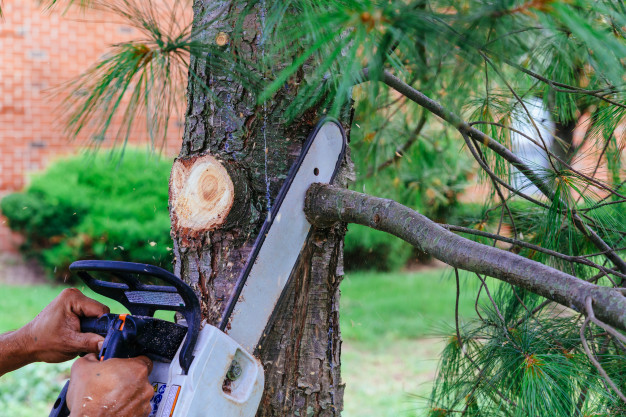I believe we can all agree that nothing completes the backyard as a nice, big tree that allows you to bask in its shadow, enjoy some privacy, put a swing or a hammock on it, or just lounge underneath it and have yourself some good time. Trees are magnificent plants. They come in all kinds of shapes and sizes. From the small, bush-like ones that provide us with juicy fruit to the large ones that have been in our family house’s backyard for generations now. Some of them are loved so much, their leaves end up on national flags.
With that in mind, it’s easy to see how much we love our trees and how much we appreciate them. However, the sad part is, they’re living beings, just as we are. That means they live and eventually they die. However, sometimes it’s not that easy to spot a dead or decaying tree and that could potentially cause some unexpected problems or damages to your property or even your loved ones. For that reason, it’s important that we learn how to recognize when’s the time for the tree to be removed.
That’s why we are here today. We’re going to talk about how you can identify the signs that the tree is giving you that it is time to say goodbye. From visual clues to some other – we’re going to explore all of them, so, if you wish to find out more, stick around for a few more moments.
1. It Looks Dead
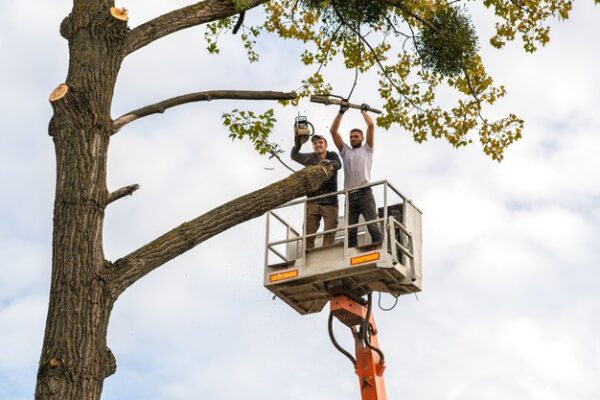
One of the most obvious signs that a tree is up for removal is when it starts appearing dead. You’ll need to pay closer attention to it, because, it’s not like it just stopped moving around one day. You’ll have to look for signs like damage, dead branches, no blossoming, no leaves, discoloured leaves, sings of decay and so on. If you notice any of those, it could mean that the lovely oak in your backyard has reached the end of its life. In those cases, it’s best not to leave it standing. Dead trees lose their structural integrity over time and they might become hazardous to you, your family or your property. Dead ones are best removed as soon as possible. Naturally, we don’t have to remind you, unless you’re dealing with a really small tree, don’t remove it yourself – call a professional.
2. It Took Some Severe Damage
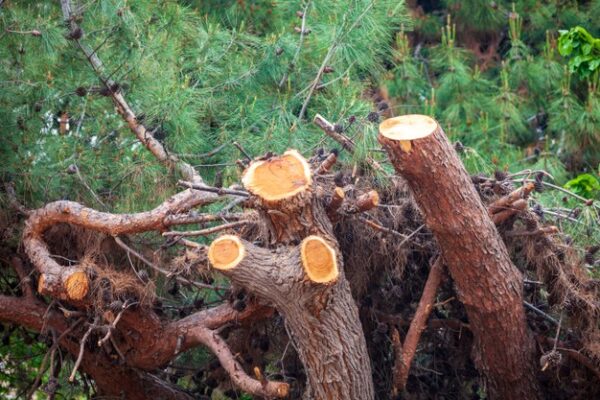
Trees are mighty and tough – there’s no way around it. However, they’re not almighty. They can take a beating and they do, but, in some instances – they just take more than they can handle. Of course, we’re talking about storms and heavy winds, not someone using the oak in their backyard as a punching bag. Now, in some cases, strong winds can cause some serious damage to the trunk and the canopy. They can rip and break off branches or in some instances even break the trunks in half. If the tree has suffered that amount of damage, it’s best to remove it. It’s extremely rare to see a tree recover from losing more than a third of its branches, not to mention a full-on breakage.
3. It’s Leaning
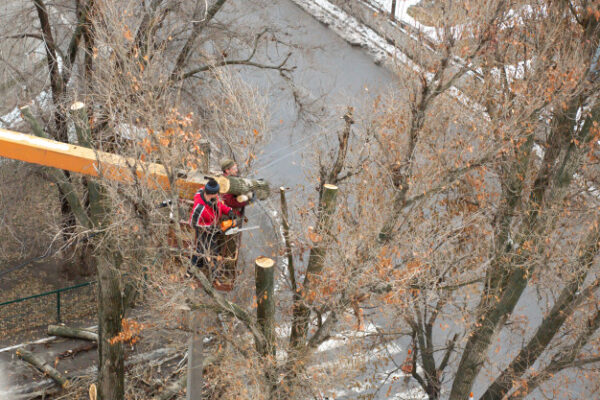
Unless you have a tree that’s grown a bit off to the side, leaning can be a sign of some internal damage. Those who have grown in such a way aren’t dangerous, it’s the ones that have been perfectly straight most of their life and then started leaning off to the side. Now, according to experts like LakesideTreesandStumps, there is a simple way to determine whether a leaning tree is safe or not. In general, if the leaning angle is lower than 10°, then the tree is pretty much good to stay. However, if the leaning angle is above 10° – it might be best to contact an arborist and have it inspect a tree and determine if it poses a threat to you or your property.
4. Hollow Trunk
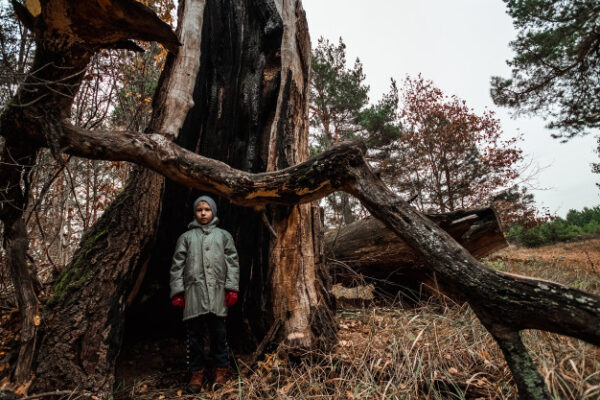
The trunk is what keeps the tree stay upright. It’s the main, load-bearing aspect of the tree. If the trunk is compromised that means that the structural integrity of the tree is compromised as well. Since you can’t see the hollowness, you’ll have to ‘hear’ things out. By tapping on the trunk with a hammer or any other blunt object, you might be able to pick up some ‘hollow’ sounds coming from the trunk. If that’s the case, there’s probably some rotting going on and you’ll have to consult with an arborist to check whether the tree is salvageable or if you’ll have to cut it down.
5. Fungi-covered Base
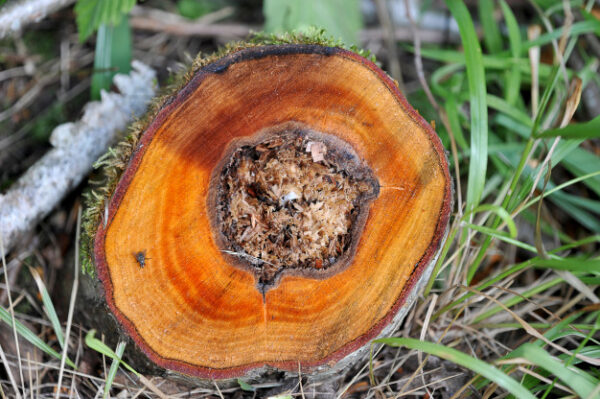
Another proven way to check the health of the tree is to take a good look at the base of the tree. When you’re looking at a healthy specimen, there should be nothing unusual down there. However, if you notice mushrooms growing around the base of the tree, that’s usually the indicator that the root system is dead and the tree has turned into a mighty meal for fungi. If you happen to notice it early, the tree can still be saved, however, if it’s mushroom-city down there, it’s chop-chop time.
6. Check The Leaves

Additionally, you can look at the leaves to determine whether you should get rid of a tree or not. In general, discolouration, dryness, patchiness or premature falling of the leaves means that there’s something wrong with the roots and that the plant is not getting enough nutrients which are causing it to decay and die. As you can imagine, dead roots mean dead plant since the plant can’t sustain life without its roots. However, you can’t be sure what’s going on by simply looking at the leaves, so it would be advised to call up an arborist and have them check out what’s going on before calling the removal service.
7. It’s Bothering You
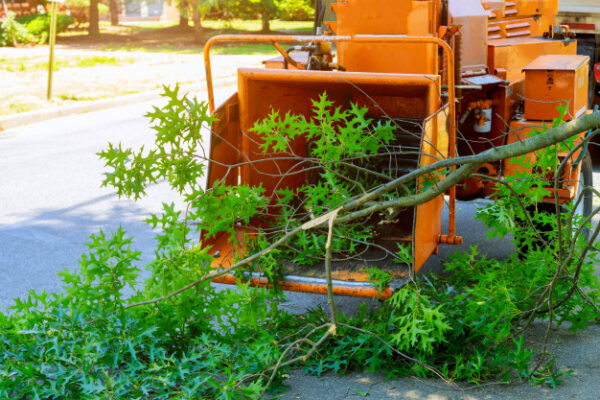
Another valid reason to remove a tree is if it’s in the way. Maybe you’re planning on building something or it has just grown too large and is now over your roof, blocking the sunlight and causing potential problems to your property. If that’s the case, you may feel free to contact a professional tree removal service and be done with it.
As you can tell, there are several reasons to remove a tree. Whatever yours is, we just hope that we have made it clear enough that you should never remove a tree all by yourself. Safety comes first – hire a pro.

